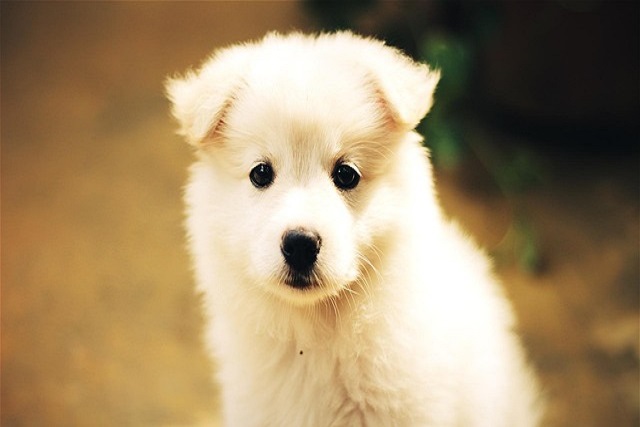
What is glaucoma in a dog?
You might notice your dog squinting more at mealtime or avoiding bright sunlight—these small changes could be early signs of a serious eye condition.
We've all been there – Fido rolls in something unmentionable, or the muddy park adventure leaves him looking less like a prized pet and more like a swamp creature. The immediate reaction is often, "Right, bath time!" But hold that thought. While keeping your dog clean is part of responsible ownership, bathing isn't always the right solution, and sometimes, it can actually be detrimental to their health and wellbeing. Knowing when to put the shampoo bottle down is just as important as knowing how to bathe them properly. Let's talk about those times when a bath should be postponed or avoided entirely.
Firstly, and perhaps most critically, avoid bathing a dog that is visibly unwell or recovering from illness or surgery. If your dog is lethargic, running a fever, vomiting, has diarrhea (as we discussed previously), or is just generally "off," adding the stress of a bath is the last thing they need. Their body is already working hard to fight off infection or heal. Bathing can cause significant stress, potentially lowering their immune response and making recovery slower. For dogs recovering from surgery, stitches or wounds need to stay dry and clean according to your veterinarian's specific instructions. Getting these areas wet increases the risk of infection and can disrupt the healing process. Always, always follow your vet's post-op care guidance – bathing before they give the all-clear is a definite no-go. Remember, animal welfare regulations in places like the UK and EU emphasize minimizing stress and preventing unnecessary suffering in pets, and bathing a sick or recovering animal often contravenes this principle.
Secondly, be extremely cautious if your dog has significant skin problems. This isn't just about a little dry skin. If your dog is suffering from open sores, hot spots (acute moist dermatitis), severe rashes, infections, or parasitic infestations (like severe mange), dunking them in water and using shampoo can be excruciatingly painful and worsen the condition. Many shampoos, even gentle ones, can sting open wounds. Water can macerate the skin, making hot spots spread. Furthermore, bathing can wash away topical medications applied by your vet. If your dog has skin issues, consult your veterinarian before attempting any bath. They may prescribe a specific medicated shampoo and provide strict instructions on how and when to use it safely. Self-treating skin conditions with baths often backfires and delays proper healing. It's a common scenario where well-intentioned owners inadvertently cause more discomfort.

Thirdly, consider the temperature – both environmental and your dog's body temperature. Bathing a dog in very cold weather, especially without the means to dry them thoroughly and keep them warm afterwards, poses a real risk of chilling and hypothermia. This is particularly true for small breeds, puppies, seniors, or dogs with thin coats. Even in milder climates, drafts after a bath can be problematic. Conversely, avoid bathing a dog that is already overheated or has just engaged in strenuous exercise. Their body is struggling to cool down, and the shock of water (especially cool water) can actually cause blood vessel constriction, hindering their natural cooling process and potentially leading to complications. Let them cool down completely with rest and access to fresh water before considering a bath. Being mindful of weather conditions and your dog's immediate physical state is part of providing appropriate care under typical animal welfare statutes.
Lastly, never force a bath on a terrified dog. Some dogs have profound phobias of water or the bathing process itself. The intense fear and stress they experience during a forced bath can be traumatic, damaging the human-animal bond, and potentially leading to defensive aggression (biting, scratching). This level of distress is unacceptable. If your dog is extremely fearful, forcing a bath violates the core ethical duty to avoid causing unnecessary mental suffering. Instead, work on gradual desensitization and counter-conditioning over time, using tons of positive reinforcement (treats, praise). Alternatively, explore excellent waterless shampoo options, professional groomers experienced with fearful dogs (discuss sedation protocols with your vet if absolutely necessary), or focus on spot cleaning. Prioritizing your dog's mental wellbeing is non-negotiable.
So, the next time Fido comes home looking less than pristine, take a moment to assess the bigger picture. Is he sick, injured, or recovering? Does he have painful skin issues? Is it freezing outside or is he panting heavily? Is he trembling at the sight of the tub? If the answer to any of these is "yes," reach for the pet wipes, a damp cloth, or the phone to call your vet or a qualified groomer before you reach for the shampoo. Knowing when not to bathe is a crucial part of keeping your furry friend truly healthy, happy, and safe, aligning perfectly with the responsible pet ownership standards expected across Europe and North America.

You might notice your dog squinting more at mealtime or avoiding bright sunlight—these small changes could be early signs of a serious eye condition.

Let’s set the scene: It’s a sweltering Phoenix afternoon—105°F outside—and you rushed your 2-year-old Lab mix, Cooper, on a quick walk to “get it over with.”

Let’s get real: You’re in your Miami apartment, watching your 3-year-old Corgi, Loki, struggle to climb the stairs to your second-floor unit.

Many dog owners brush off occasional scratching as just “dog behavior,” but persistent itching often signals something more—like a food allergy.

You might first notice your dog scratching more than usual—chewing at their paws until the fur looks thin, or rubbing their face against the couch nonstop.

Let’s be real: You’re standing in your Chicago apartment, watching your 3-year-old Beagle, Max, huff and puff just to climb onto the couch.